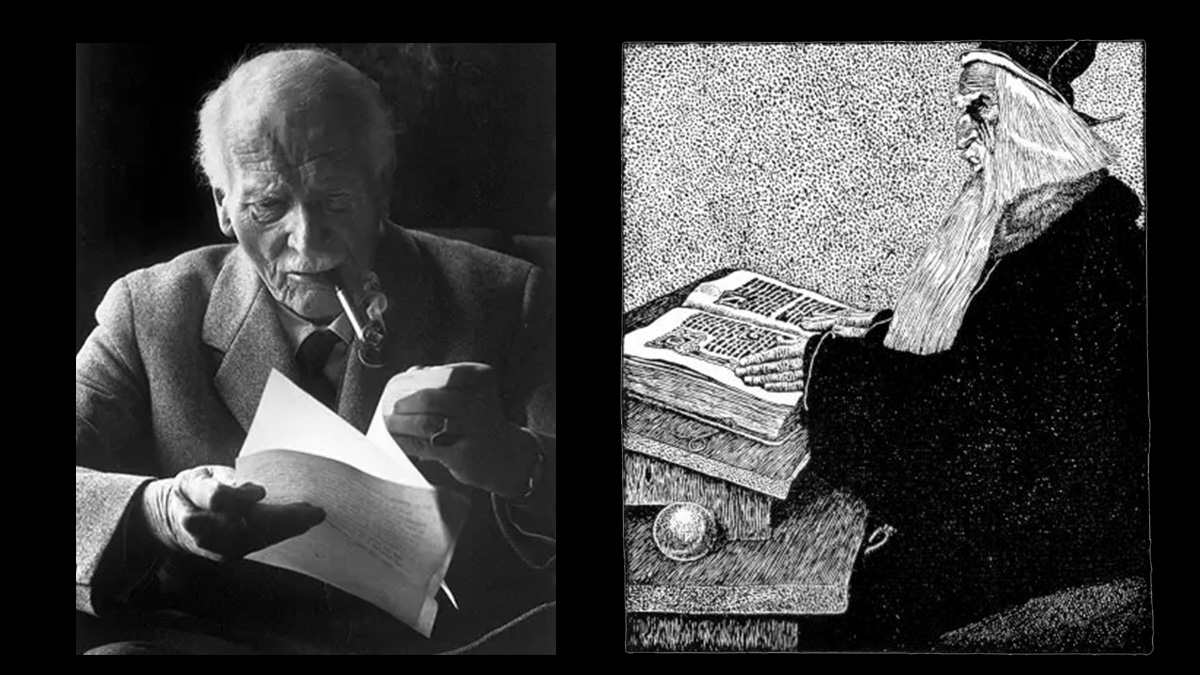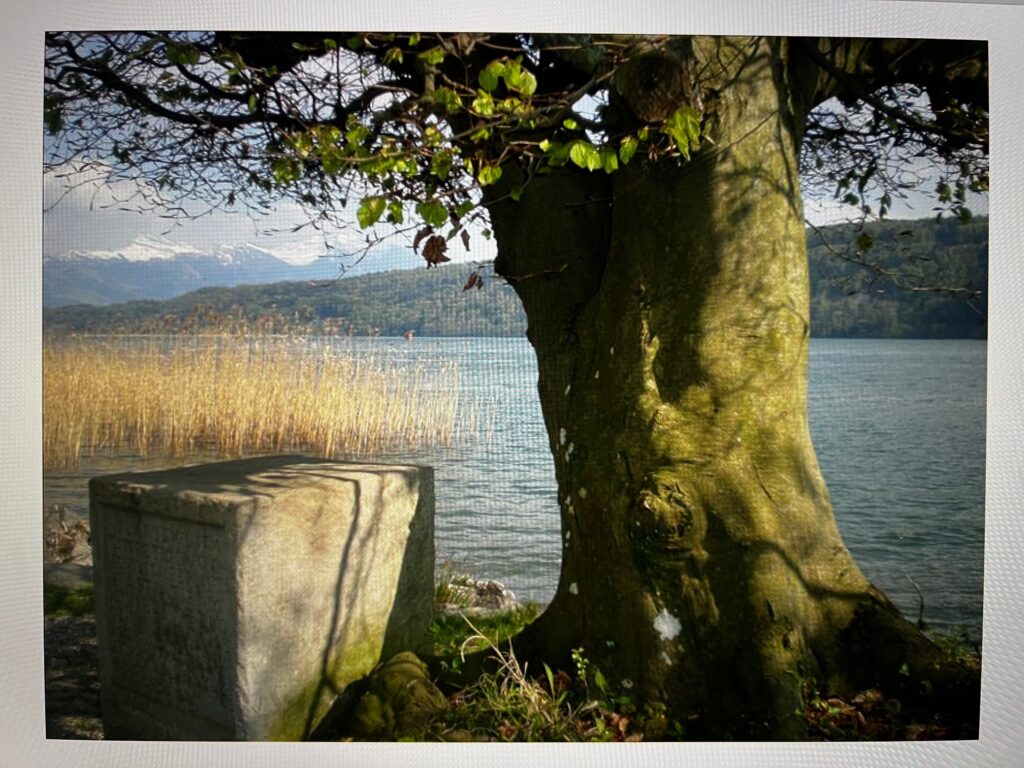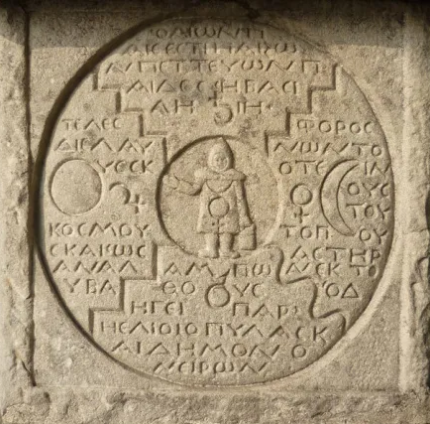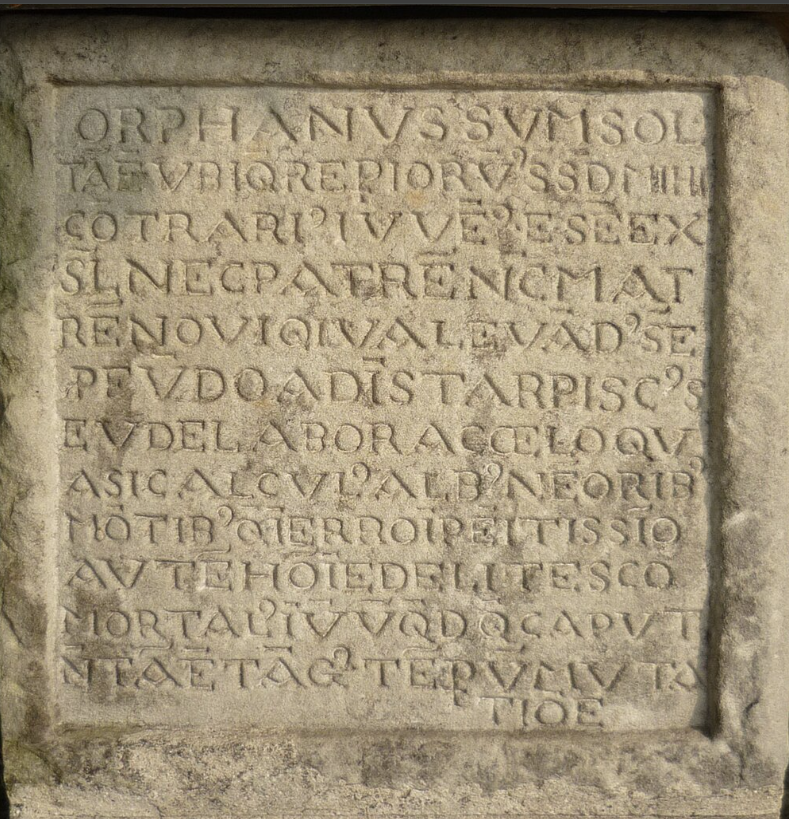Jung’s Grail Dream and Merlin

From C.G. Jung: His Myth in Our Time
Marie-Louise von Franz
When, almost twenty years after the Grail dream [see below] Jung became acquainted with details of the Merlin saga, he was shaken.
Without in the least being aware of the fact, he had done and experienced so much which is reminiscent of Merlin.
He had built himself a stone tower, in order to get away from the bustle of everyday life, a refuge like Merlin’s esplumoir.
[The word esplumoir has never been explained, but it probably refers to the cage in which falcons molted, hence a place for “molting” or transformation).
Jung’s tower was where he lived in No. 2, his larger form, or Self.
He writes:
At Bollingen I am in the midst of my true life, I am most deeply myself.
Here I am, as it were, the “age-old son of the mother.”
That is how alchemy puts it, very wisely, for the “old man,” the “ancient,” whom I had already experienced as a child, is personality Number 2, who has always been and always will.
Page 279
The Grail Dream (in India, 1938)
I found myself, with a large number of my Zurich friends and acquaintances, on an unknown island, presumably situated no far off the coast of Southern England.
It was small and almost uninhabited.
The island was narrow, a strip of land about twenty miles long. . . .
On the rocky coast at the southern end of the island was a medieval castle. …
Before us rose an imposing belfroi, through whose gate a wide stone staircase was visible.
We could just manage to see that it terminated above in a columned hall.
This hall was dimly illuminated by candlelight.
I understood that this was the castle of the Grail, and that this evening there would be a “celebration of the Grail” there.
This information seemed to be of a secret character, for a German professor among us, who strikingly resembled old Mommsen, knew nothing about it.
[There follows a discussion with this professor, whom Jung tries to convince that the Grail stories, which the professor thinks are simply the dead past, are psychically still the living present. Jung continues:]
I looked around somewhat helplessly, and discovered that I was standing by the wall of a tall castle; the lower portion of the wall was covered by a kind of trellis, not made of the usual wood, but of black iron artfully formed into a grapevine complete with leaves, twining tendrils, and grapes.
At intervals of six feet on the horizontal branches were tiny houses, likewise of iron, like birdhouses.
Suddenly I saw a movement in the foliage; at first it seemed to be that of a mouse, but then I saw distinctly a tiny, hooded gnome, a cucullatus, scurrying from one little house to the next.
“Well,” I exclaimed in astonishment to the professor, “now look at that, will you. . . .”
At that moment a hiatus occurred, and the dream changed. We… were outside the castle, in a treeless, rocky landscape.
I knew that something had to happen, for the Grail was not yet in the castle and still had to be celebrated that same evening.
It was said to be in the northern part of the island, hidden in a small, uninhabited house, the only house there.
I knew that it was our task to bring the Grail to the castle. [With six companions, Jung set out, but reached an arm of the sea which separated the island into two halves. His companions gave up and fell asleep.]
I considered what could be done, and came to the conclusion that I alone must swim the channel and fetch the Grail.
At that point I awoke.
C.G. Jung: His Myth in Our Time
Marie-Louise von Franz
Pages 272-273
Page 279
Search inside
(4 results)
- Page 273I looked around somewhat helplessly, and discovered that I was standing by the wall of a tall castle; the lower portion of the wall was covered by a kind of trellis, not made of the usual wood, but of black iron artfully formed into a grapevine complete with leaves, twining tendrils, and grapes. At intervals of six feet on the horizontal branches were tiny houses, likewise of iron, like birdhouses. Suddenly I saw a movement in the foliage; at first it seemed to be that of a mouse, but then I saw distinctly a tiny, hooded gnome, a cucullatus, scurrying from one little house to the next. “Well,” I exclaimed in astonishment to the professor, “now look at that, will you. . . .”
- Page 273At that moment a hiatus occurred, and the dream changed. We… were outside the castle, in a treeless, rocky landscape. I knew that something had to happen, for the Grail was not yet in the castle and still had to be
- Page 273far off the coast of Southern England. It was small and almost uninhabited. The island was narrow, a strip of land about twenty miles long. . . . On the rocky coast at the southern end of the island was a medieval castle. … Before us rose an imposing belfroi, through whose gate a wide stone staircase was visible. We could just manage to see that it terminated above in a columned hall. This hall was dimly illuminated by candlelight. I understood that this was the castle of the Grail, and that this evening there would be a “celebration of the Grail” there. This information seemed to be of a secret character, for a German professor among us, who strikingly resembled old Mommsen, knew nothing about it. [There follows a discussion with this professor, whom Jung tries to convince that the Grail stories, which the professor thinks are simply the dead past, are psychically still the living present. Jung continues:]
- Page 273I looked around somewhat helplessly, and discovered that I was standing by the wall of a tall castle; the lower portion of the wall was covered by a kind of trellis, not made of the usual wood, but of black iron artfully formed into a grapevine complete with leaves, twining tendrils, and grapes. At intervals of six feet on the horizontal branches were tiny houses, likewise of iron, like birdhouses. Suddenly I saw a movement in the foliage; at first it seemed to be that of a mouse, but then I saw distinctly a tiny, hooded gnome, a cucullatus, scurrying from one little house to the next. “Well,” I exclaimed in astonishment to the professor, “now look at that, will you. . . .”
- Page 273At that moment a hiatus occurred, and the dream changed. We… were outside the castle, in a treeless, rocky landscape. I knew that something had to happen, for the Grail was not yet in the castle and still had to be celebrated that same evening. It was said to be in the northern part of the island, hidden in a small, uninhabited house, the only house there. I knew that it was our task to bring the Grail to the castle. [With six companions, Jung set out, but reached an arm of the sea which separatéd the island into two halves. His companions gave up and fell asleep.]




The dream landscape drawn by Jung is reminiscent of River Styx symbolism that ferry’s the death of the physical body to a narrow twenty mile long peninsula. The crusade of companions drop away and leave the individual to the task of uniting Jung’s primary personality (ego) with his respective shadow (anima). The process of individuation is illustrated in the dream when the island bifurcates creating a channel of water that Jung must swim (unconscious self). The completion of this psychic task is the goal of individuation. Jung does not complete the journey but gains great insight into process.
Mary Thanks for all you comments. This is the kind of dialogue I was hoping for on this website, and hope other people also do so …